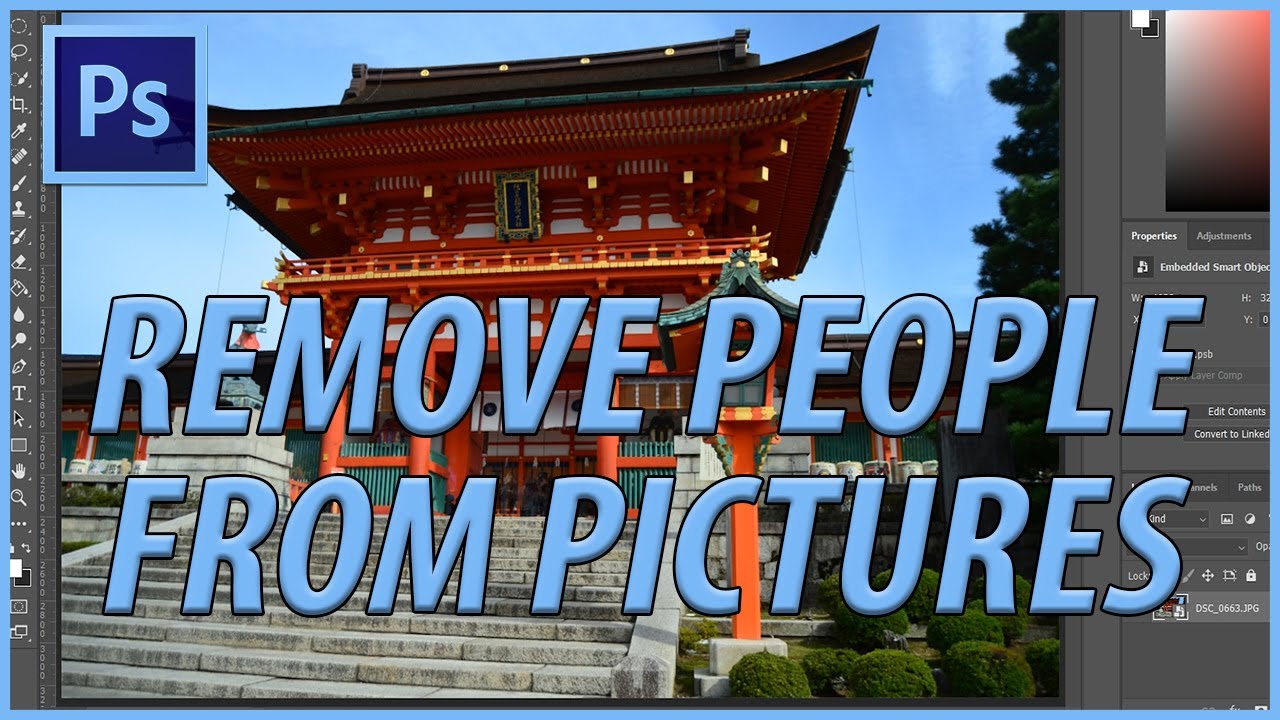Mastering Photo Manipulation: A Comprehensive Guide to Removing People from Photos in Photoshop Using Image Stack Tutorial
Emily March 1, 2024
Introduction:
In the realm of digital image editing, Photoshop stands as the ultimate powerhouse, offering an array of tools for photographers and artists to manipulate and enhance their visuals. One common challenge faced by creatives is the need to remove unwanted elements from photos, especially people. In this comprehensive guide, we will explore an advanced technique for achieving seamless and realistic people removal using the Image Stack Tutorial in Photoshop. This method, combining the power of image stacking and advanced masking, provides a nuanced approach to erasing people from photos without leaving a trace.
Section 1: Understanding Image Stack Tutorial
1.1 Introduction to Image Stacking
Image stacking involves combining multiple images into a single composite, allowing for enhanced control over different elements. We’ll delve into the fundamentals of image stacking, its applications in photography, and its relevance to the removal of people from photos.
1.2 The Power of Photoshop’s Image Stack
Photoshop’s Image Stack Tutorial is a versatile tool that allows users to blend multiple images seamlessly. We’ll explore its functionalities, discussing how it enables precise control over various layers and elements within a composite image.
Section 2: Preparing Your Images
2.1 Selecting the Base Image
Choosing the right base image is crucial for a successful people removal process. We’ll discuss considerations such as lighting, composition, and perspective, ensuring that the selected base image serves as a solid foundation for the final composition.
2.2 Capturing Reference Images
To facilitate accurate people removal, capturing reference images without the unwanted subjects is essential. We’ll explore strategies for capturing reference shots that align seamlessly with the base image, ensuring realistic integration in the final composite.
Section 3: Image Stacking and Layer Alignment
3.1 Importing Images into Photoshop
Guided by step-by-step instructions, we’ll walk through the process of importing the base image and reference images into Photoshop, setting the stage for the image stacking process.
3.2 Aligning Layers for Precision
Achieving perfect alignment is critical for seamless blending. We’ll explore Photoshop’s layer alignment tools, ensuring that all elements in the composite are precisely matched, creating a harmonious final image.
Section 4: Advanced Masking Techniques
4.1 Layer Masks for Precision
Layer masks serve as the linchpin for realistic people removal. We’ll delve into advanced masking techniques, discussing the use of brushes, gradients, and refinement tools to create masks that seamlessly integrate the reference images into the base photo.
4.2 Refining Mask Edges
Perfecting the edges of the masked areas is essential for a polished result. We’ll explore Photoshop’s refinement tools, including the Brush tool, Refine Edge, and Select and Mask, enabling users to achieve a level of detail that ensures the removed people leave no visual artifacts.
Section 5: Blending and Adjustments
5.1 Layer Blending Modes
Harnessing the power of layer blending modes enhances the overall cohesion of the composite. We’ll discuss the strategic application of blending modes to create a natural and unified appearance, ensuring that the removed people seamlessly integrate with the background.
5.2 Color Matching and Tone Adjustments
Achieving consistent color and tone is vital for a convincing result. We’ll explore techniques for color matching and tone adjustments, allowing users to fine-tune the composite image and ensure a harmonious integration of the base and reference images.
Section 6: Finishing Touches and Realism
6.1 Adding Shadows and Highlights
To enhance realism, we’ll discuss the importance of adding shadows and highlights to the composite image. Photoshop’s tools for creating realistic shadows will be explored, providing the final touches that anchor the removed people within the environment.
6.2 Applying Filters for Cohesion
Strategic use of filters can enhance the overall cohesion of the composite. We’ll explore the application of filters for blur, grain, and other effects, ensuring that the final image exhibits a consistent visual language.
Section 7: Review and Export
7.1 Thorough Inspection of the Composite
Before finalizing the process, a thorough inspection of the composite is essential. We’ll discuss strategies for reviewing the image, addressing any remaining imperfections, and ensuring that the people removal appears natural and seamless.
7.2 Exporting the Final Composite
Once satisfied with the result, we’ll explore the optimal settings for exporting the final composite. Considerations for file format, resolution, and intended use will be discussed, allowing users to share or utilize the image according to their specific needs.
Conclusion:
The Image Stack Tutorial in Photoshop serves as a powerful ally for those seeking to remove people from photos with precision and realism. By combining the principles of image stacking with advanced masking techniques, users can seamlessly erase unwanted subjects while maintaining the integrity of the original image. This comprehensive guide has equipped you with the knowledge and skills needed to master the art of people removal in Photoshop. As you embark on your creative endeavors, remember that practice and experimentation are key to refining your proficiency. Whether you’re a photographer, digital artist, or graphic designer, the techniques explored in this guide will empower you to elevate your image editing capabilities and achieve stunning, people-free compositions with confidence and finesse.







